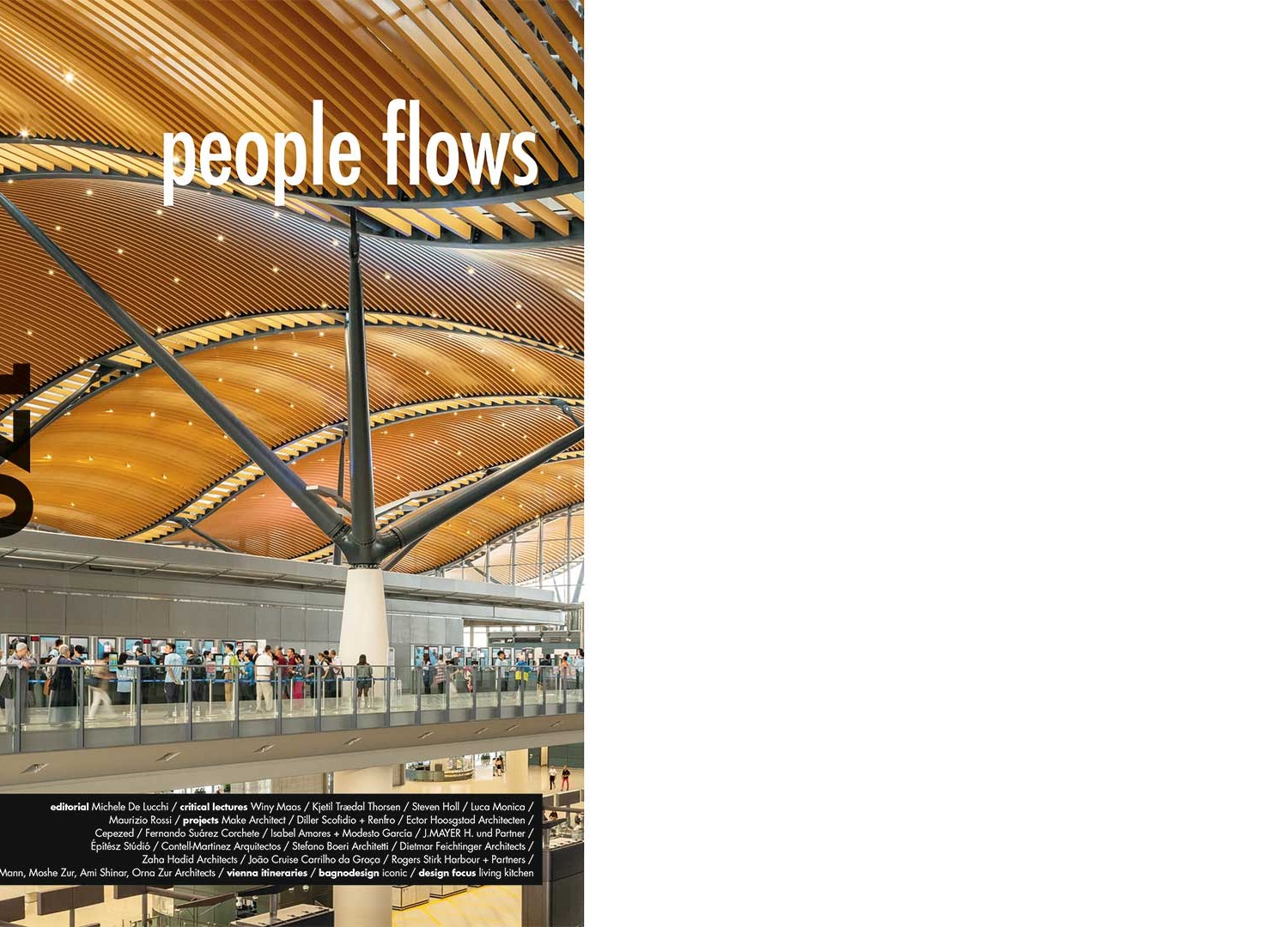
International magazine of architecture and project design may/june 2020
After lockdown we will start moving around again… but how?
The recent unexpected and mandatory lockdown has taught us, in addition to the inadequacy of many of the domestic spaces in which we live, the extreme need for everyone to reunite, exchange opinions, travel, gain knowledge. However, it will be necessary to do this in a more conscious way, limiting private mobility as much as possible, which not only pollutes but more generally devastates the quality of life in our urban centres. In two months of lock down, and with therefore the absence of traffic, we have rediscovered spatiality and sonority lost beyond a clarity of air and water that in some contexts have not been seen for decades. And since we all ask ourselves where and how this pandemic will change our lives and our habits, among the many negative consequences that impose an anti-human social distancing, we must hope for a more conscious use of resources and time and also a more intelligent way of moving and travelling around. We have probably understood that many of our movements are avoidable and that many of the economic activities can be done remotely and through an effective network connection, but it is to be hoped that finally, at every level, the importance of the theme of collective transport infrastructures in two dimensions, the virtual and the real one. Both dimensions show how selective contemporaneity is by cutting out from everyday life those places, those urban contexts and those homes that are not effectively connected with a world that has become absolutely global, for good – the circulation of information – and for bad – the uncontrollable spread of a virus. From the point of view of the network infrastructures linked to digitisation, unfortunately there is an inequality pushed by an economy that favours large numbers by neglecting smaller towns in a way that does not differ much from the physical and real connecting infrastructures. And this is unforgivable because it means once again that digitalisation is used more as a sales and consumption tool than as an opportunity to democratise society. At the same time, and perhaps precisely for these reasons, architects are required to commit themselves to supporting every opportunity for physical modification of the places we inhabit starting from mobility systems. And since precisely the architects during the last century believed and shifted towards a modernity entirely hinged on the automobile, to the point of theorising and building cities focused on private mobility, Brasilia docet, or even hypothesising roads on the roofs of buildings as in the Lecorbuserian dreams of the Algiers plan, it is up to today‘s architects to remedy these nefarious dreams of glory by working daily to promote and design sustainable and environmentally compatible systems for future mobility. And since “designing“ also means to foresee, to set a goal with one‘s mind, to determine, it is up to the discipline of architecture, and those who in various ways take care of it, to come up with new possibilities for permanent living, the home, but also nomadic, the system of displacements. In this way every pedestrian path, cycle path, station, terminal, high-line project is today a revolutionary and predictive act of a life that tends to free itself as quickly as possible from the use of fossil fuels and the privatisation, first of all, of the collective space, streets and squares.
Marco Casamonti
Download cover
Download table of contents
Download introduction of Marco Casamonti


